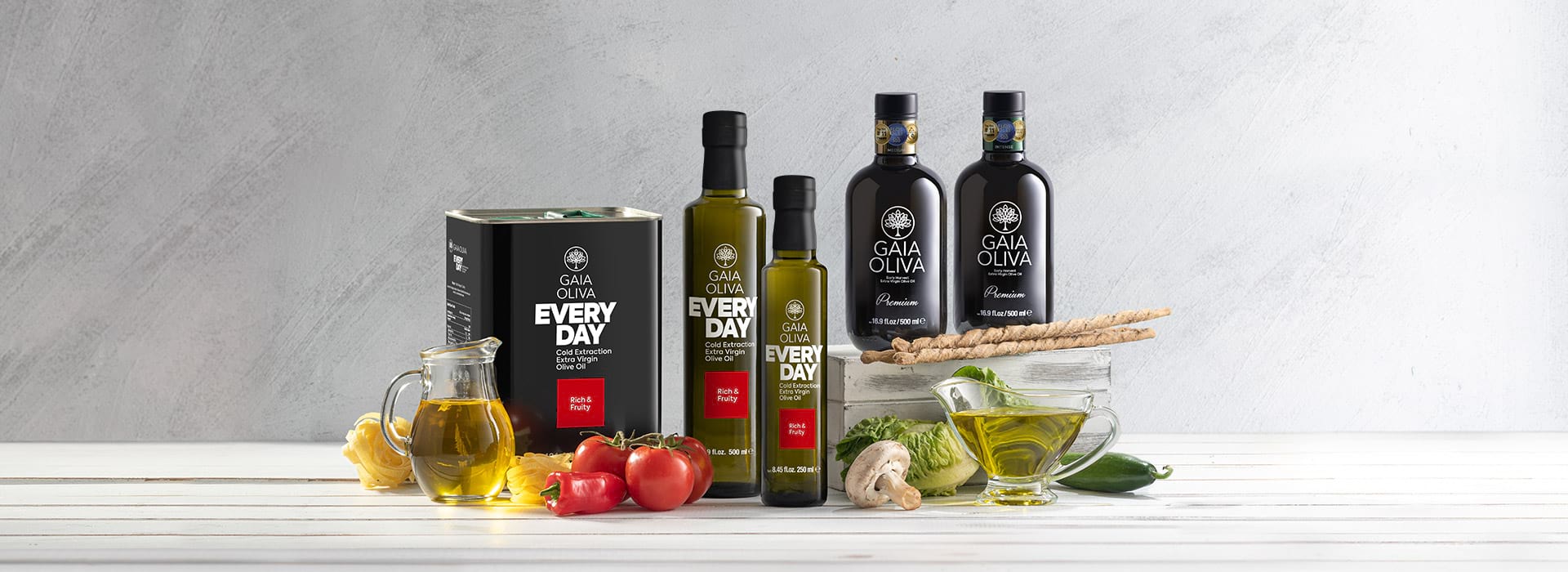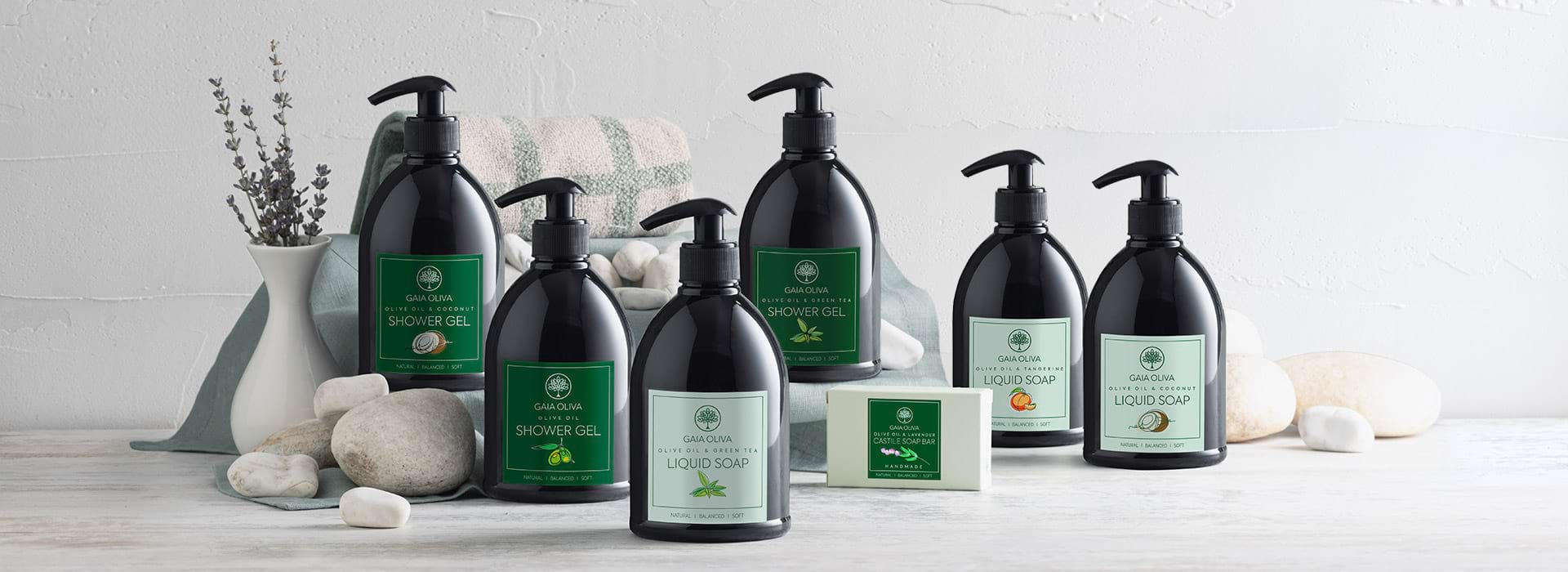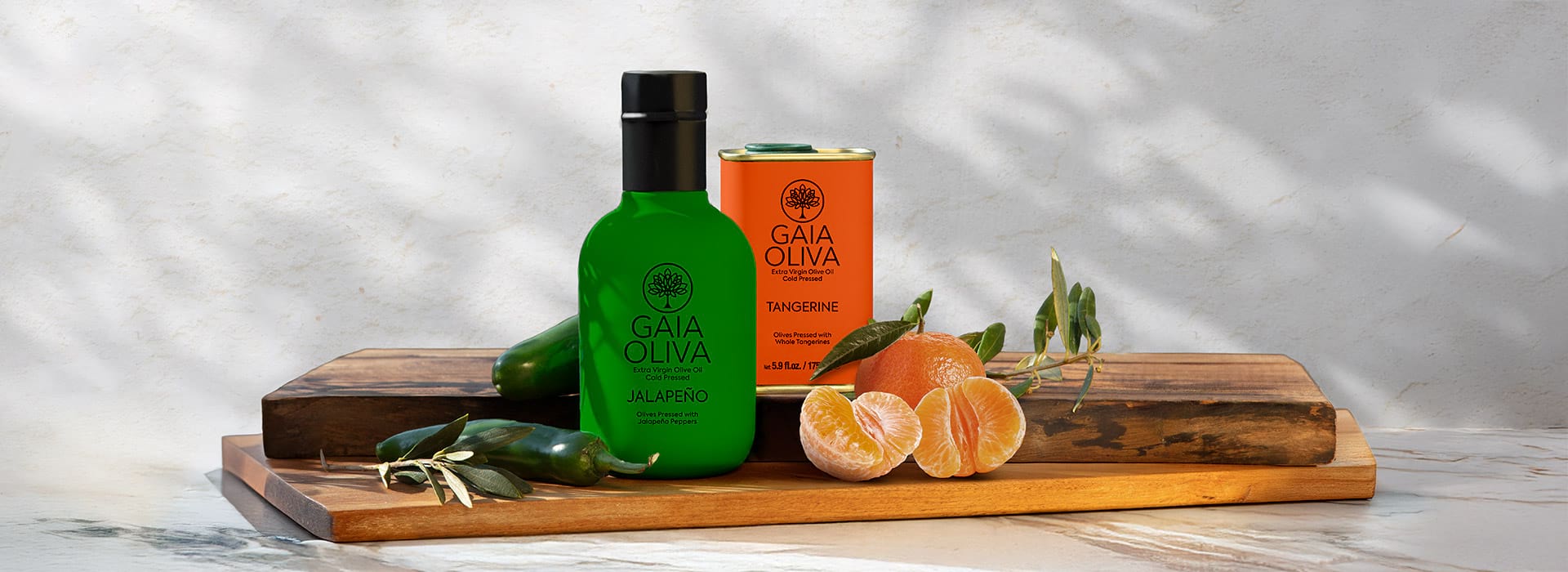A GUIDE TO CHOOSING AND USING OLIVE OIL
Olive oil is one of the most characteristic flavors of Mediterranean cuisine. The olive oil you incorporate into your recipes can elevate your dishes to a completely new level of flavor. The secret to experiencing this lies in choosing the right olive oil.
By using an olive oil that suits the type of dish, you can enrich your recipes with different aroma profiles and scents. The right choice of olive oil can bring liveliness to your salads, add a unique character to your seafood, provide a deep flavor to your meat dishes, and give a pleasant aroma to your desserts. So, which olive oil should be used in which dish?
Let's explore the highest quality types of olive oil and their characteristics. Then, we will learn about the various olive oil varieties suitable for culinary use, enabling you to create gourmet flavors.

WHICH TYPE OF OLIVE OIL TO USE IN COOKING?
Olive oil is one of the purest flavors obtained without any chemical processing. In fact, because the olive is a stone fruit and olive oil is extracted without adding anything, it is considered a type of fruit juice in different cultures. To experience the most aromatic version of this flavor, consuming extra virgin olive oil is key.
You might be wondering, "Can you cook with extra virgin olive oil?" The answer is: Yes, extra virgin olive oil is a type of oil that you can safely use in cooking due to its health benefits and superior flavor.
One of the main features that make extra virgin olive oil ideal for cooking is its acidity level. The most important factor determining the quality of olive oil is its acidity level. Olive oils with a free fatty acidity, expressed as oleic acid, below 0.8 grams per 100 grams are classified as extra virgin olive oil.
There are two types of extra virgin olive oil based on the harvest time of the olives: early harvest olive oil and mature harvest olive oil. Although the production methods for these two types are the same, their aromas, scents, colors, and polyphenol content vary depending on the ripeness of the olives. Both early harvest and late harvest olive oils impart characteristic aromas to different types of dishes.

FOR THE GOURMETS IN THE KITCHEN: EARLY HARVEST OLIVE OIL
Early harvest olive oil is obtained by picking olives while they are still green, before they ripen. When olives are green, they contain a high amount of polyphenols. These polyphenols, which give the olive its green color, also impart a bitter taste to the fruit. As a result, early harvest olive oil achieves its balanced bitterness that is felt in the throat.
This gourmet delight is ideal for those who want to taste olive oil in its pure, uncooked form. Although it is a favorite for cold dishes, it also adds a unique flavor to hot recipes.
The aroma is not the only feature that makes early harvest olive oil indispensable in the kitchen. The polyphenols it naturally contains are also a valuable source of antioxidants. This makes early harvest olive oil the right choice not only for those who appreciate good taste but also for those who care about their health.

WHICH DISHES TO USE EARLY HARVEST OLIVE OIL IN?
You can benefit from both types of olive oil at different meals throughout the day. The important thing is to know which type of olive oil to add to which dish. Start by learning the uses of early harvest olive oil:
- To start a healthy day and enjoy a delightful breakfast, we recommend keeping early harvest olive oil on your table. Drizzle this fruity flavor over your salad to highlight the natural taste of the vegetables. You can also create delicious dipping sauces by adding regional spices like thyme to the olive oil.
- For a flavor that unfolds in waves with every bite, use early harvest olive oil in your spicy dishes. This type of extra virgin olive oil pairs perfectly with spicy and seasoned foods, enhancing all the flavors.
- To offer your guests a gourmet appetizer before the meal, mix olive oil with balsamic vinegar and basil, and serve this mixture with bruschetta.
- You can also use early harvest olive oil to marinate meats, bringing out their tasting notes.
- For a light and irresistible snack between lunch and dinner, drizzle early harvest olive oil over slices of mozzarella, tomatoes, and basil.
- To prepare an irresistible cheese platter, drizzle olive oil over sliced cheeses and fresh herbs like thyme and basil.
- Early harvest olive oil is a must for an evening seafood menu. You can sauté seafood with olive oil or add it to grilled seafood.
To enjoy the best of early harvest olive oil, we recommend choosing one that meets the quality criteria. It's important to consider sensory criteria such as aroma, scent, and flavor, as well as production processes. By selecting an olive oil obtained through the right methods from harvest to production, you can experience the most aromatic version of this unique flavor.
To embrace a healthier lifestyle, use Gaia Oliva Premium Early Harvest Extra Virgin Olive Oil, produced with MoriTem technology, which best preserves the nutritious and volatile components in your dishes.

FOR THOSE SEEKING A VELVETY FLAVOR: MATURE HARVEST OLIVE OIL
Olives begin to ripen in November, depending on the region. The oil obtained from ripened olives is called mature harvest or late harvest olive oil. As green olives ripen, they turn purplish or black. The loss of green color also means a decrease in the amount of polyphenols and chlorophyll in the olives.
This change in the olives due to ripening is reflected in their flavor. Mature harvest olive oil has a balanced and smooth taste, with more fruity notes rather than spicy ones. As an alternative to the intense aroma of early harvest olive oil, this type of extra virgin olive oil can be enjoyed with pleas-ure and adds a special aroma to dishes.
USING MATURE HARVEST OLIVE OIL IN COOKING
Given the rich diversity of Mediterranean cuisine, there are many dishes that pair well with both ear-ly harvest and mature harvest olive oils. Let’s explore some of the dishes that harmonize perfectly with mature harvest extra virgin olive oil:
- By using mature harvest olive oil in dishes like chicken, turkey, and fish, you can achieve a superb flavor without overpowering the light taste of white meat.
- For those seeking the lightest and of course, the most delicious version of frying, here’s a tip. The question “Can you fry with extra virgin olive oil?” is one of the most frequently asked. You can comfortably use extra virgin olive oil for frying. We especially recommend using late harvest olive oil to impart aroma without a dominant taste.
- If you are a fan of desserts with deepened flavors from citrus peels, we suggest preparing these rec-ipes with mature harvest olive oil. The silky aroma of mature harvest olive oil combines with des-serts to create a wonderful flavor experience for gourmet palates.
- Mature harvest olive oil also complements the various aromas in hot stews. Not only during the cooking process, but you can also elevate the flavor of hot dishes like pizza and pasta by drizzling mature harvest olive oil on top. For this soft and fruity olive oil flavor, you can use Gaia Oliva Pre-mium Cold Pressed Extra Virgin Olive Oil.
It's not hard to understand why olive oil has been called liquid gold since ancient times. Its benefits are what earn it this well-deserved title. To make the most of olive oil’s health benefits and superior flavor, it’s wise to make an accurate choice. Depending on your taste preferences, you can benefit from mature harvest extra virgin olive oil or early harvest extra virgin olive oil in different dishes.











Leave a comment